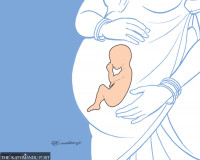Nepal on Friday reported one more Covid-19 related death and 593 new cases, taking the national tally to 11,755.
According to the Health Ministry, the swab samples of an unidentified woman who was found in an unconscious state outside the Rapti Institute of Health Sciences in Dang and was later pronounced dead, tested positive for the virus.
“The woman likely aged 25-30 years was found in an unconscious state and brought to Dang-based Rapti Institute of Health Sciences. She was pronounced dead on June 25 and her swab sample was collected the same day,” said ministry spokesperson Dr Jageshwor Gautam, during a regular press briefing.
“The tests conducted on the deceased’s swab sample came positive for Covid-19 today.”
With the latest death, the toll due to Covid-19 has reached 27.
The ministry also confirmed 593 new cases in the last 24 hours.
“Samples of 76 individuals from Palpa, 75 from Dang, 51 from Rautahat, 46 from Doti, 42 from Kanchanpur, 31 from Kailali, 27 from Bajura, 25 each from Baitadi and Gulmi, 23 from Nawalparasi (East), 21 from Kapilvastu, 20 from Pyuthan, 15 from Dhanusha, 12 each from Chitwan and Surkhet, and 10 from Sunsari, tested positive for coronavirus,” said Gautam.
“Tests conducted on samples of nine persons from Bajhang, six each from Siraha, Gorkha, Lamjung and Rupandehi, five from Dailekh, four each from Jhapa, Mahottari and Salyan, three each from Darchula, Kathmandu, Sindhuli, Argakhaanchi and Jumla, two each from Morang, Bara, Accham, Tanahun and Jajarkot; and one each from Kaski, Nuwakot, Baglung, Syangja, Nawalparasi (West) and Mugu, came positive for Covid-19,” Gautam said.
Nepal had reported two Covid-19 deaths and 434 new cases on Friday. Likewise, 629 cases were reported on Wednesday. The ministry had confirmed one death and 538 new cases on Tuesday. As many as 535 cases were detected on Monday and 421 new cases and one death on Sunday. Nepal recorded 331 new coronavirus cases on Saturday.
According to the ministry, Rasuwa in Bagmati Province is the only district without a single case so far.
Rautahat has a total of 1,292 cases, the highest for a district, followed by Dailekh with 776 infections while Kapilvastu has 727 Covid-19 patients.
“So far, 206,271 polymerase chain reaction tests and 290,349 rapid diagnostic tests have been carried out across the country,” said Gautam.
With 48 people discharged in the last 24 hours after recovering, the number of total discharged patients has reached 2,698, Gautam said.
Track all Covid-19 cases in Nepal here.
Frequently asked questions about the coronavirus outbreak
UPDATED as of September 22, 2020
What is Covid-19?
Covid-19, short for coronavirus disease, is an illness caused by the coronavirus SARS-CoV-2, short for severe acute respiratory syndrome coronavirus 2. Common symptoms of the disease include fever, dry cough, fatigue, shortness of breath and breathing difficulties. In severe cases, the infection can cause pneumonia, severe acute respiratory syndrome, kidney failure and even death.
How contagious is Covid-19?
Covid-19 can spread easily from person to person, especially in enclosed spaces. The virus can travel through the air in respiratory droplets produced when a sick person breathes, talks, coughs or sneezes. As the virus can also survive on plastic and steel surfaces for up to 72 hours and on cardboard for up to 24 hours, any contact with such surfaces can also spread the virus. Symptoms take between two to 14 days to appear, during which time the carrier is believed to be contagious.
Where did the virus come from?
The virus was first identified in Wuhan, China in late December. The coronavirus is a large family of viruses that is responsible for everything from the common cold to Middle East Respiratory Syndrome (MERS) and Severe Acute Respiratory Syndrome (SARS). After an initial outbreak in Wuhan that spread across Hubei province, eventually infecting over 80,000 and killing more than 3,000, new infection rates in mainland China have dropped. However, the disease has since spread across the world at an alarming rate.
What is the current status of Covid-19?
The World Health Organisation has called the ongoing outbreak a “pandemic” and urged countries across the world to take precautionary measures. Covid-19 has spread to 213 countries and territories around the world and infected more than 31,405,983 people with 967,505 deaths and 22,990,260 recoveries. In South Asia, India has reported the highest number of infections at 5,557,573 with 88,943 deaths. While Pakistan has reported 306,304 confirmed cases with 6,420 deaths. Nepal has so far reported 65,276 cases with 427 deaths.
How dangerous is the disease?
The mortality rate for Covid-19 is estimated to be 3.6 percent, but new studies have put the rate slightly higher at 5.7 percent. Although Covid-19 is not too dangerous to young healthy people, older individuals and those with immune-compromised systems are at greater risk of death. People with chronic medical conditions like heart disease, diabetes and lung disease, or those who’ve recently undergone serious medical procedures, are also at risk.
How do I keep myself safe?
The WHO advises that the most important thing you can do is wash your hands frequently with soap and water for at least 20 seconds or use hand sanitizers with at least 60 percent alcohol content. Avoid touching your eyes, nose and mouth with unclean hands. Clean and disinfect frequently used surfaces like your computers and phones. Avoid large crowds of people. Seek medical attention if symptoms persist for longer than a few days.
Is it time to panic?
No. The government has imposed a lockdown to limit the spread of the virus. There is no need to begin stockpiling food, cooking gas or hand sanitizers. However, it is always prudent to take sensible precautions like the ones identified above.





 7.73°C Kathmandu
7.73°C Kathmandu













